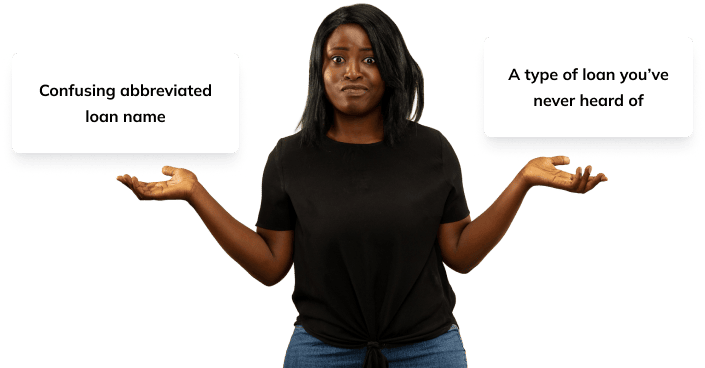You are less than 60 seconds away from your quote.
Resume from where you left off. No obligations.

Our 1% Down Payment Loan is a unique offering that allows eligible borrowers to contribute just 1% of the purchase price as their down payment and avoid PMI.
Benefits
This program offers a robust solution to the challenges faced by many prospective homeowners!
Benefits
A bridge loan is a short-term financing option that allows you to tap into the equity of your current property to use towards the purchase of your new home.
Benefits
CalHFA's Dream For All Shared Appreciation Loan is a down payment assistance program for first-generation and first-time homebuyers that provides 20% towards the down payment and/or closing costs.
Benefits
Trade up to the new home of your dreams with this innovative program that helps you qualify for a new mortgage while still on the hook for your existing mortgage.
Benefits
First-time buyers can now get rates up to 1% LOWER permanently with JVM's Rate Discount Program.
Benefits
This unique program gives you $10,000 to help cover the costs of homeownership.
Benefits
The shorter term makes a 15-year loan a great option for those looking to pay off their mortgage quickly and are comfortable taking on a higher monthly payment.
Benefits
This is one of the most popular mortgage loan options for a reason. The longer 30-year term means lower, fixed monthly payments over the life of the loan.
Benefits
These loans offer very low interest rates for a set period (typically 5, 7 or 10 years), after which the interest rate will adjust and increase.
Benefits
This lending program is designed to make homeownership more accessible and affordable for low to moderate-income borrowers.
Benefits
This lending program is designed to make homeownership more accessible and affordable for low-income borrowers.
Benefits
Jumbo loans are a non-conforming loan option perfect for buyers looking in higher-priced locations or who have a more expansive homebuying budget.
Benefits
FHA loans have flexible qualification requirements and low down payment options, making them a great option for first-time homebuyers.
Benefits
USDA mortgage loans are a zero down payment option that allows eligible homebuyers in designated rural areas to buy with 0% down.
Benefits
VA loans are available exclusively to veterans and active-duty personnel (along with their spouses) and are guaranteed by the U.S. Department of Veteran Affairs.
Benefits
Our 1% Down Payment Loan is a unique offering that allows eligible borrowers to contribute just 1% of the purchase price as their down payment and avoid PMI.
Benefits
This program offers a robust solution to the challenges faced by many prospective homeowners!
Benefits
CalHFA's Dream For All Shared Appreciation Loan is a down payment assistance program for first-generation and first-time homebuyers that provides 20% towards the down payment and/or closing costs.
Benefits
This lending program is designed to make homeownership more accessible and affordable for low to moderate-income borrowers.
Benefits
FHA loans have flexible qualification requirements and low down payment options, making them a great option for first-time homebuyers.
Benefits
This lending program is designed to make homeownership more accessible and affordable for low-income borrowers.
Benefits
USDA mortgage loans are a zero down payment option that allows eligible homebuyers in designated rural areas to buy with 0% down.
Benefits
VA loans are available exclusively to veterans and active-duty personnel (along with their spouses) and are guaranteed by the U.S. Department of Veteran Affairs.
Benefits
A cash-out refinance gives you access to cash for home improvements, tuition, and debt consolidation by utilizing the equity you have already accumulated for your home.
Benefits
Refinancing your mortgage during Chapter 13 can provide a means of achieving financial stability and a pathway to a fresh start.
Benefits
Ideal for homeowners seeking additional funds, whether for home improvements, debt consolidation, or other major expenses.
Benefits
A no cost refinance allows you to refinance your home without having to pay any money out-of-pocket for your closing costs.
Benefits
A rate and term refinance allows you to lower your interest rate and improve your mortgage terms without changing the amount of money owed on your home.
Benefits
A bank statement mortgage loan is a unique type of home loan designed to cater to those with non-traditional income sources.
Benefits
A bridge loan is a short-term financing option that allows you to tap into the equity of your current property to use towards the purchase of your new home.
Benefits
These loans are designed to assist non-U.S. citizens in purchasing a home, giving access to the American dream of homeownership to more buyers.
Benefits
If you're struggling to qualify for a traditional mortgage, we have a loan that is an ideal alternative to hard money with no income verification requirements at all.
Benefits
Non-QM loans provide alternative mortgage financing options for homebuyers who may not qualify based on traditional lending requirements.
Benefits
A renovation home loan is your golden ticket to transforming a fixer-upper into your dream home by allowing you to bundle the cost of the home and the renovation into a single mortgage loan.
Benefits
DSCR Mortgage Loans (Debt Service Coverage Ratio Loans) are a specialized type of lending product designed with real estate investors in mind.
Benefits
Investing in real estate is a great way to increase your monthly income by renting the property and allows you to diversify your investment portfolio.
Benefits
Whether you are a first-time buyer or buying your next investment property, we are happy to answer all of your questions.

Resume from where you left off. No obligations.